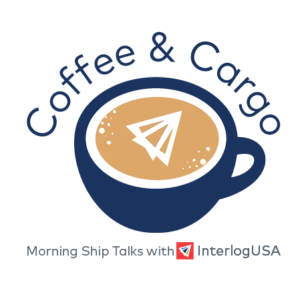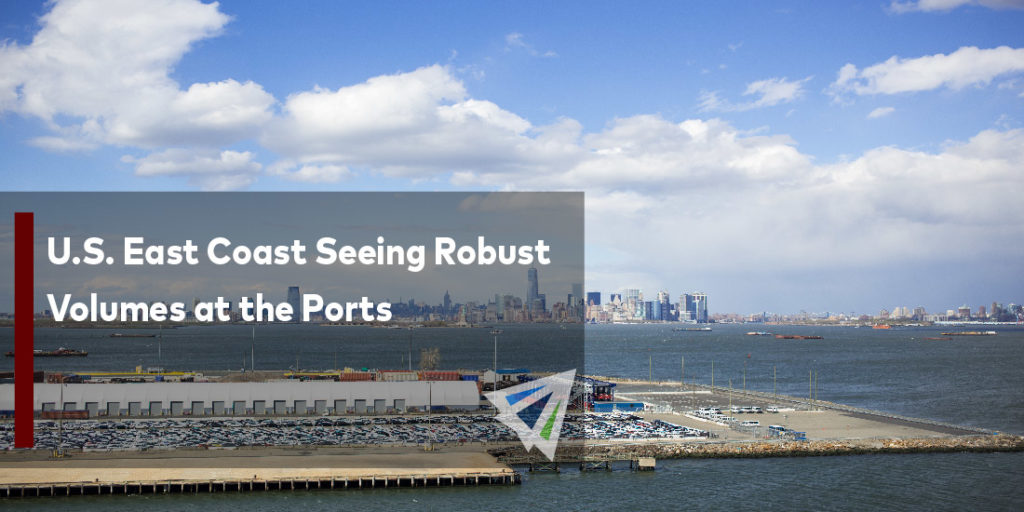Competitive Edge
May 25th, 2022
Stay Current with Interlog’s Weekly Newsletter:
Headlines
- Contract negotiations between the International Longshore and Warehouse Union (ILWU) and the Pacific Maritime Association (PMA) have been suspended until June 1. See below in the newsletter for more details.
- According to the Journal of Commerce, ocean carriers are skipping some calls to Canada and the US East Coast and shifting arrival dates in June as North American port congestion and delays force liners to rework schedules.
UPDATE: U.S./Canada Ports – Number of Vessels at Anchor as of 05/24/22
- Vancouver: 23 Vessels at Anchor (+2)
- New York/Newark: 14 Vessels at Anchor (-2)
- Houston: 14 Vessels at Anchor (+1)
- Savannah: 13 Vessels at Anchor (+1)
- San Francisco/Oakland: 6 Vessels at Anchor (-2)
- Charleston: 5 Vessels at Anchor (+4)
- Los Angeles/Long Beach: 4 Vessels at Anchor (-6)
Note: This does not include vessels moored and being unloaded at port docks.
Courtesy: MarineTraffic
IMPORT: Asia to North America (TPEB)
Recent Developments:
- Lockdown measures imposed in Shanghai and the subsequent impacts of them remain in play. Restrictions continue to be imposed for manufacturing within the region. See below for more details.
- There remains uncertainty on when exactly Shanghai will begin reopening and easing off its restrictions and lockdown measures, though many are anticipating mid-to-late June.
- Demand is relatively lower than what it has been over the past year ahead of traditional peak season.
- Industry forecasts—while not all—assert that demand will spike to elevated levels when Covid-related lockdowns and restrictions ease in China.
- Congestion at Los Angeles/Long Beach has alleviated in the time being due to impacts of Covid-19 lockdown measures and restrictions in China.
- However, container dwell time still remains within a range of five to seven days as rail infrastructure struggles to handle volumes.
Rates: Rates remain relatively elevated compared to pre-pandemic levels. However, USWC-bound sailings are seeing alleviation in rates. Some transpacific carriers have announced GRIs for June to all Canadian and U.S. destinations from Asian and Indian Sub-Continent origins.
Space: Space has opened up in result of China’s Covid-related restrictions, particularly FAK (Freight-of-all-kinds) space on services calling from Shanghai. However, for temperature-controlled and hazardous cargo, space is critical.
Capacity: Capacity has also seen some softening due to China’s Covid-related restrictions. However, as more shippers shift to the USEC, capacity has also tightened in pockets.
Equipment: Intermodal systems are still stressed with truck and chassis availability remaining dire.
TIPS: Book at least 3 weeks prior to CRD. Strongly consider premium service and alternative routings. Additionally, be in contact with suppliers to check up on any Covid-related developments that can affect production.
IMPORT: Europe to North America (TAWB)
Recent Developments:
- USWC ports remain congested. However, wait times for vessels have vastly improved. In some cases, wait times have cut down to even 10 days at Los Angeles/Long Beach ports.
- On the USEC, the Port of Charleston has sustained improvements to its operations and has significantly decreased its number of waiting vessels offshore.
Rates: Tightened capacity and fully booked vessels have led to increases in rates.
Space: Space remains critical for USEC and USWC.
Capacity: Capacity for both North Europe and Mediterranean services remain gripped as a continuing result of high demand. Port congestion at USWC and USEC ports, while improved, also remain a contributor in capacity issues.
Equipment: Equipment remains available at European seaports. However, inland terminals in Europe are still reporting equipment shortages.
TIPS: Book 5 or more weeks prior to CRD. Shippers are strongly advised to consider premium service for no-roll options and improved reliability for their cargo.
EXPORT: North America to Asia
Recent Developments:
- Congestion remains considerable at some USEC ports—notably, New York/Newark.
- Diminishing schedule integrity is contributing to void sailings, delays, vessel cut-offs at ports, and challenging post earliest return dates.
- Vessel arrivals remain smooth for USWC POLs.
Rates: GRI activity (limited) announced for May. As of now, no announcements for June GRIs.
Capacity: Available capacity remains fluid for USWC POLs.
Equipment: Truck and chassis availability remain causes for concern and has significantly contributed to congestion of the intermodal system.
TIPS: Book 4 to 6 weeks prior to ETD to secure equipment and vessel space.
Did You Know:
Two overhead cranes at Norfolk Southern Railway’s Jacksonville terminal will be operational within the next two months, after being damaged in past fires
This is a critical move for the port to restore normal service, as the two cranes function is to lift containers on and off railcars.
One crane will hopefully be operational again in just a few weeks, while the other crane should be ready in July.
Source: JOC
Freight News
Longshore West Coast contract talks have been suspended until June 1st
Contract talks between the International Longshore and Warehouse Union (ILWU) and the U.S. West Coast waterfront employers that are represented by the Pacific Maritime Association (PMA) have been suspended until June 1st, the Journal of Commerce reported.
However, both sides are continuing to have individual committee meetings on issues such as worker safety, the JOC reports. Additionally, the Executive Director of the Port of LA said ‘industry stakeholders’ should not rush to conclusions because of a temporary halt in negotiations.
Update on the Shanghai lockdowns and the impact this has had on U.S. Ports
Shanghai has been locked down for around 8 weeks and while it still remains locked down, it slowly is getting back to normal. Shanghai Vice Mayor Zong Ming announced on May 16th of a three-phase plan for reopening, with hopes to return to normal life and business operations by mid-to late June. Additionally, on May 18th, Deputy Director of Shanghai Customs stated that Shanghai would open a “green channel” for the city’s key industries and hope to expand facilitation measures to entire industrial and supply chains, Triple Eagle Group stated.
Additionally, notices from several Chinese Embassies say Chinese ship seafarers will no longer need to serve 14-day quarantines before they head back to China from a number of countries in Europe, Asia and Middle East – Seatrade Maritime reported. This is significant as the 14-day quarantine requirement has been a major headache, as many countries require seafarers to board a flight within 72 hours of leaving the vessel, Seatrade Maritime reports.
The impact this has had on U.S. Ports
Port of Oakland: saw a reported 15% decline in cargo containers in April compared to the same time last year. U.S. exports specifically have been hampered by chaotic vessel schedules in China. Officials at the port say that shipping volumes in May do show signs of an increase, and the port continues to be in talks with shipping lines on increasing the number of Oakland vessel calls.
Port of Seattle and Tacoma: also saw a decline in volumes in April, a reported 13.8% decline compared to April 2021. Many officials at the port attribute the decline to the shutdowns in China.
Some have even been shifting their shipments from the USWC to the USEC. Ports out on the East Coast have generally been seeing record volumes. The Port of Savannah has been reporting record numbers in the past month, processing 495,782 containers in April 2022 compared to 466,633 in April 2021. In just the first four months this year the part is running ahead a little over 3 percent from the first four months last year. Additionally, the Port of Virginia saw their second-most productive month in the port’s history, with processing more than 323,000 TEU’s – up nearly 13% from 2021
Sign up next month's webinar:

Sign up below to secure your spot in next month's webinar on Wednesday, June 15th at 10am CST!
Sign up for our
industry answers
Our team works to provide valuable, unique, and relevant content to assist you in finding solutions. Sign up now.
